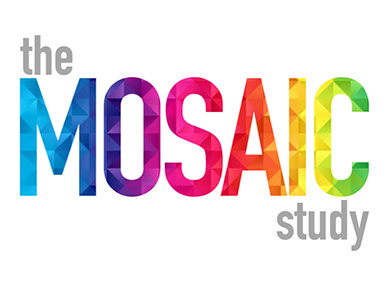Level 1, 16 University Avenue
Macquarie University NSW 2109
Improving quality of life and equitable opportunities
Solving the challenge of communicating in complex, noisy environments for people with listening difficulties.
Learn more about the projects we are undertaking in this area and the research teams involved.
The MOSAIC Study
Funded by: NSSN, Cochlear, Google Research (Australia)
 Hearing loss disrupts the pathway to healthy ageing and independent living by increasing communication difficulties and reducing social interactions and quality of life.
Hearing loss disrupts the pathway to healthy ageing and independent living by increasing communication difficulties and reducing social interactions and quality of life.
While hearing devices provide a means to re-establish the hearing pathway, listening through devices means communication can still be difficult, and breakdowns still occur.
We use sensor-fusion to:
- determine the critical noise level of communication breakdowns for ageing individuals who wear hearing devices
- detect the biomarkers that predict communication breakdowns.
Our long-term strategic goal is to exploit these processes to minimise or prevent breakdowns by enhancing signal processing strategies to mitigate communication loss.
- Dr Kelly Miles
- Dr Ronny Ibrahim
- Dr Alan Kan
- Dr Yvonne Tran
- Professor Michael Richardson
- Associate Professor Jörg Buchholz
- Professor Jeesun Kim – The MARCS Institute
- Professor Chris Davis – The MARCS Institute
- Dr Simon Carlile – Google Research, Australia
- Dr Zach Smith – Cochlear
Our research partners:
- Cochlear
- Google Research (Australia)
- The MARCS Institute
Contact: kelly.miles@mq.edu.au
PRISM
Funded by: Australian Future Hearing Initiative
This project aims to advance knowledge on human communication in noise and multi-talker environments, and its interplay with hearing loss and hearing devices.
- Associate Professor Jörg Buchholz
- Dr Kelly Miles
- Dr Ronny Ibrahim
- Dr Alan Kan
- Dr Yvonne Tran
- Lisa Maggs
- Dr Zach Smith – Cochlear
- Dr Simon Carlile – Google Research, Australia
- Katie Neal – The Shepherd Centre
- Dr Aleisha Davies – The Shepherd Centre
- Dr Nicky-Chong White – National Acoustic Laboratories
- Professor Greg Leigh – NextSense
Our research partners:
- Cochlear
- Google Research (Australia)
- National Acoustic Laboratories
- The Shepherd Centre
- NextSense
Contact: jorg.buchholz@mq.edu.au
Comparing the benefits of hearing aids and cochlear implants in real-world listening environments
Funded by: Cochlear-MQ fund
This project aims to understand the real-world listening performance of CI/HA users and the factors that contribute to performance variability.
We will employ audiological tests that assess speech understanding and basic sensitivity, laboratory tests of spatial hearing, and novel listening tests conducted in realistic virtual environments.
By identifying the factors that impact the ability to utilise spatial hearing when listening in noisy environments:
- more sensitive tools can be developed to assess the benefits of hearing intervention and
- evidence can be provided for when an intervention can have the greatest impact in everyday situations.
- Associate Professor Jörg Buchholz
- Dr Alan Kan
- Lisa Maggs
- Dr Zach Smith – Cochlear
Our research partners:
- Cochlear
Contact: jorg.buchholz@mq.edu.au
Developing next-generation sensors for stress and fatigue monitoring in cochlear implant recipients
Funded by: Cochlear-MQ fund
Our research focuses on understanding how stress and fatigue, as physiological responses, affect listening in noise and multi-talker environments for individuals with hearing loss.
We are developing next-generation sensors to integrate into hearing devices to better index stress and fatigue.
- Dr Yvonne Tran
- Associate Professor Noushin Nasiri
- Dr Kelly Miles
- Professor Yuling Wang
- Dr Ronny Ibrahim
- Dr Alan Kan
- Associate Professor Scott Barnes
- Lisa Maggs
- Associate Professor Jörg Buchholz
- Dr Zach Smith – Cochlear
- Dr Bec Bennet – National Acoustic Laboratories
Our research partners:
- Cochlear
Contact: yvonne.tran@mq.edu.au
Realistic assessment of hearing ability and device benefit: Visual speech benefit
Funded by: Sonova-MQ-NAL alliance
The overarching goal of this project is to improve the ecological validity of current laboratory/clinical speech-in-noise assessments. The goal of this study is to understand how far the inclusion of visual speech information (ie seeing the talker speak) affects individual outcomes and increases their ecological validity.
- Associate Professor Jörg Buchholz
- Dr Ronny Ibrahim
- Dr Kelly Miles
- Dr Yvonne Tran
- Lisa Maggs
- Dr Jorge Meija
- Dr Peter Derleth
Our research partners:
- Sonova, National Acoustic Laboratories
Contact: jorg.buchholz@mq.edu.au
Speech-in-noise outcomes following stroke
Everyday places where we come together to connect with our families and friends – like cafes and restaurants – are often the noisiest and most challenging environments for communication.
Characterised by unfavourable signal-to-noise ratios (SNRs) and rife with distractions such as people talking at adjacent tables, these settings require a complex interplay of auditory and cognitive-driven processes to facilitate successful communication.
However, cognitive processes are often compromised in the post-stroke population. Given cognition plays an important role in speech perception – especially in noise and multi-talker environments – we aim to better understand speech-in-noise outcomes following stroke.
- Dr Kelly Miles
- Associate Professor Scott Barnes
- Dr Jae-Hyun Kim
- Dr Vince Oxenham
- Dr Yvonne Tran
- Associate Professor Jörg Buchholz
- Associate Professor Martin Krause
Contact: kelly.miles@mq.edu.au